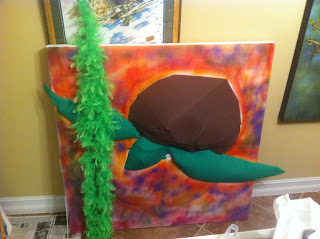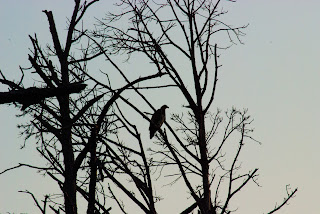Growing up on Sanibel has allowed me to inherit a grand appreciation for
my environment and the creatures that live here. Colloquium has given me a
sense of the environments fragility and the need for things to be in balance.
The environment works much like a piece of marble before a sculpture carves
into it. I can see nature as it is normally and how it is when humans invade.
Nature is like a shell that Anne Morrow Lindberg picks up and describes “pure, simple and unencumbered; It is like the artist’s vision
before he has to discipline it into form” (Lindbergh, 1955, p.55). It was, however, in my colloquium
journey that I realized that I could use my strengths and appreciation for the
environment for a better good, at the same time discovering how to make my art
more personal and meaningful. “The
Role of the Artist in Conservation,” Adams declared, “I believe the approach of
the artist and the approach of the environmentalist are fairly close in that
both are, to a rather impressive degree, concerned with the ‘affirmation of
life' (Turnage,
1980, p.1). I find myself constantly painting birds, turtles, lizards and
animals without any reason for it and without really thinking about it. It just
comes natural for me to want to paint what I see around me. Oddly enough I am
however un-attracted to and unmoved by man-made objects. I have always been drawn toward animal subjects rather than people and
my art shows that. “By
responding to their own surroundings, artists often incorporate a sense of
place in their work. This is particularly true of Southern artists” (ogdenmuseum.org). I found this quote on a museum website
and it is relevant because it shows how much our environment can influence us. “Art doesn’t come from fancy equipment. It
comes from a way of seeing the world” (Clydebutcher.com). For me, art is a way of seeing and telling the
world that we need to protect nature and that nature is important.
Sunday, April 22, 2012
Saturday, April 21, 2012
Journal 25 - Thankful
I am thankful for my life, my Girlfriend, my Family, My job, Art, living in Southwest Florida, Going to Florida Gulf Coast University, and all the things that have made me who I am.
Thursday, April 19, 2012
Journal 24 - Opening of Art Show Art-ificial in FGCU art lab
On April 19th my art show for my Digital Media Class opened in the FGCU Art Lab. The theme was bio-technology, (an incorporation of Biology and technology). In my exhibit I used the painting of the sea turtle that I made out of recycled wine corks. My mission statement and overall effort of the project was to make people feel ethically obligated to protect and preserve our environment.
video of the show: http://www.youtube.com/watch?v=0rN54So4Lq4&feature=relmfu
video of the show: http://www.youtube.com/watch?v=0rN54So4Lq4&feature=relmfu
Journal 23 - Nature Continuing to Inspire me to Paint
I took these photos of a Brown Anole that was very photogenic, I decided to make the next recycled wine cork an Anole.
Tuesday, April 17, 2012
Journal 22 - My Neighbor's Cat Maddie
As I sit observing nature, the curiosity of my neighbors cat always inspires me, she is a hunter and loves to hunt, stalk, climb and pounce. I grab my camera and shoot away, always trying to catch that instinctual curiosity in action.
Sunday, April 15, 2012
Journal 21 - Protecting Endangered Species with Paintings
I finished My Wine cork tree Painting that I named "A Requiem of Songbirds"
My next painting is going to be a Sea Turtle, I hope by painting these paintings to spread awareness to protect this endangered species.
Saturday, April 14, 2012
Journal 20 - Reflection on Sense of Place
My
sense of place is defined by the spider webs, ospreys diving, and living waters
flowing through Southwest Florida. The walls of my existence are made of saw
palmetto, mangroves, and limestone. I feel a connection to the land I live
within, and it wounds me also that it is being torn to pieces for yet another
unneeded big box store.
Friday, April 13, 2012
Journal 19 - Reflection on sustainability
The
concept of sustainability consists of living in a way that one could essentially
live in that way forever, without fear of running out of any resource. The rate
that humanity is currently living at would take six or more Earths’ to support.
We only have one. We, as Americans, need to curb our resource use and develop
Earth smart technologies that would further raise the standard of living around
the globe. America in particular need to focus on this, and make it a
requirement for the health of our nation, because as the largest consumer
society that is setting an example for both growing India and China, we, as a
nation of consumers, would lead other nations down the same path, as producers
of all the stuff we buy, and help guide the global economy to make sustainable choices.
Thursday, April 12, 2012
Journal 18 - An exploration of Florida Wilderness
Me and my buddy went out on April 12th on a photographing expedition into the woods behind his house. The Area of land borders Koreshan Park and is not very often walked or inhabited by humans. No properties are on the land, it was Pine upland with mostly sawgrass, pine trees and saw palmetto. It was very dense and I got cuts all over my legs.
Monday, April 9, 2012
Journal 17 - Field Trip to Covanta Waste to Energy Plant
Even though the Field Trip to Covanta Waste to Energy yielded very little usable photos
because of the low lighting, the Field trip was an overall a very stimulating experience.
What they are doing there which is producing electricity for millions of people out of those people trash. It was field trips to places like Covanta Energy that reinstalled
confidence that we are going to find ways to become more sustainable as people
as part of a whole so that we can continue to live on this earth.
Monday, April 2, 2012
Journal 16 - Ding Darling Trip
My girlfriend and I decided to go on a trip to The J. N. "Ding" Darling
National Wildlife Refuge. The Ding Darling is located on Sanibel Island.
The refuge is part of the largest undeveloped mangrove ecosystem in the
United States. It is world famous for its spectacular migratory bird
populations. We saw mullet, horseshoe crabs, an osprey, herons, ibis and
a duck.
Subscribe to:
Comments (Atom)






















































